After taking a look at the charging and charge sensing, I also wanted to take a look at the drop formation. Both processes are crucial for building a working CIJ printer.
On many CIJ printers, a stack of 2 piezo rings is mounted on the nozzle to let it vibrate at a fixed frequency. Normally all parts are designed to work together within certain constraints:
The piezo frequency, stream/nozzle diameter, pressure, and viscosity need to fit well enough together to make a controlled breakup of the stream into equal-sized drops possible.
So much for the theory...
In reality, this seems to be a big challenge, and I'm constantly working to get it right at some point.
To learn more about the drop breakup, I was looking for a way to record it on camera.
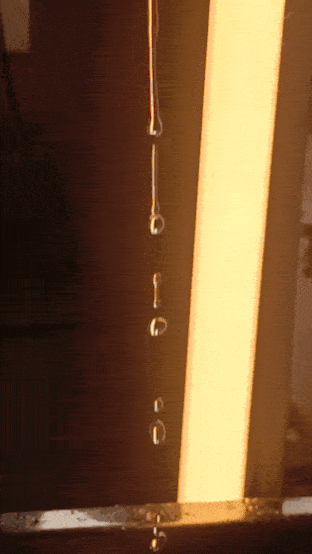
Changes to the previous Test Stand
For recording the stream on camera, I replaced the 1 1/4 pipe tank with a pump to be able to record a continuous stream breaking into drops instead of drops dripping from a nozzle.
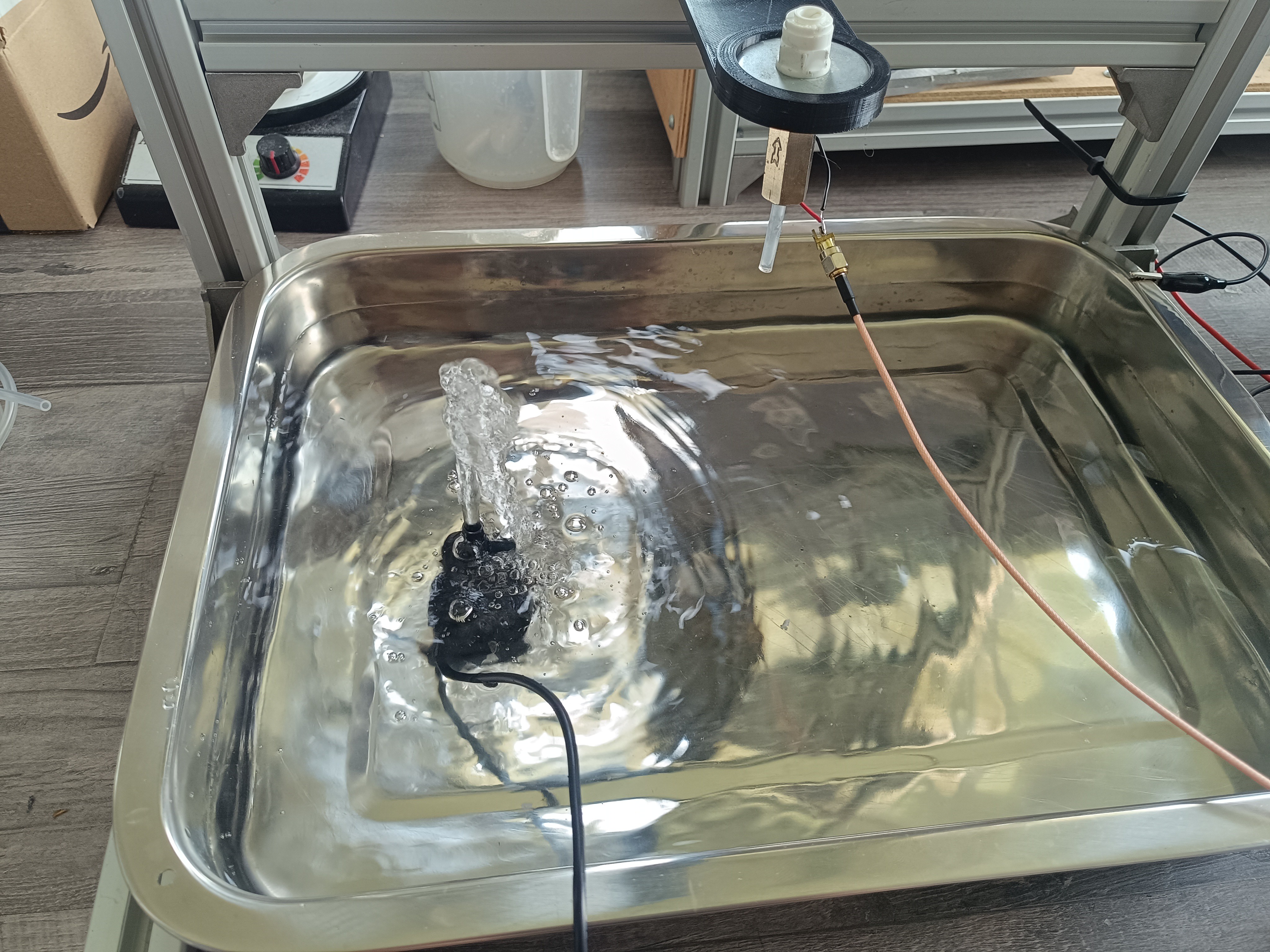
The next step was to let the stream vibrate at a certain frequency to get an even, non-random breakup. To make recording easier, I wanted to use a larger stream so that no magnifying glass or microscope would be needed. Because of that, breaking the stream into droplets now requires a more powerful source of vibration.
For this, I replaced the piezo with a vibration speaker, like the type of speaker that can play music via vibration when attached to the surface of a desk or wall.
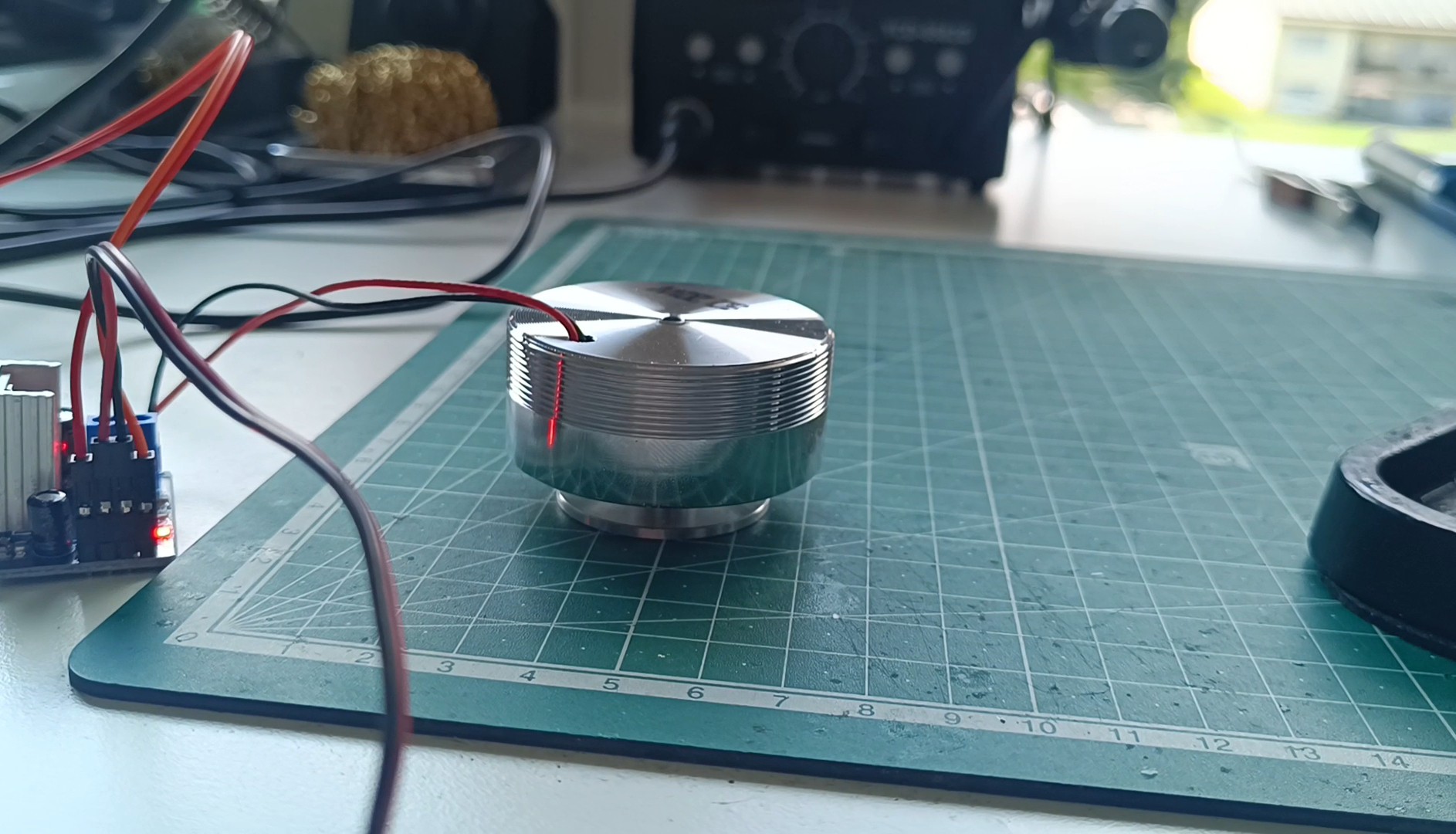
I got an 8R 20W vibration speaker and used a TDA2030 amplifier for driving it which I powered by 12V DC.
After verifying that the speaker could be used well for playing music through my desk, I attached it, together with the amplifier, to the test stand on which I also attached a 9mm hose fitting for using it as a nozzle, a silicone hose that was connected to the pump and some more fittings to hold everything in place.
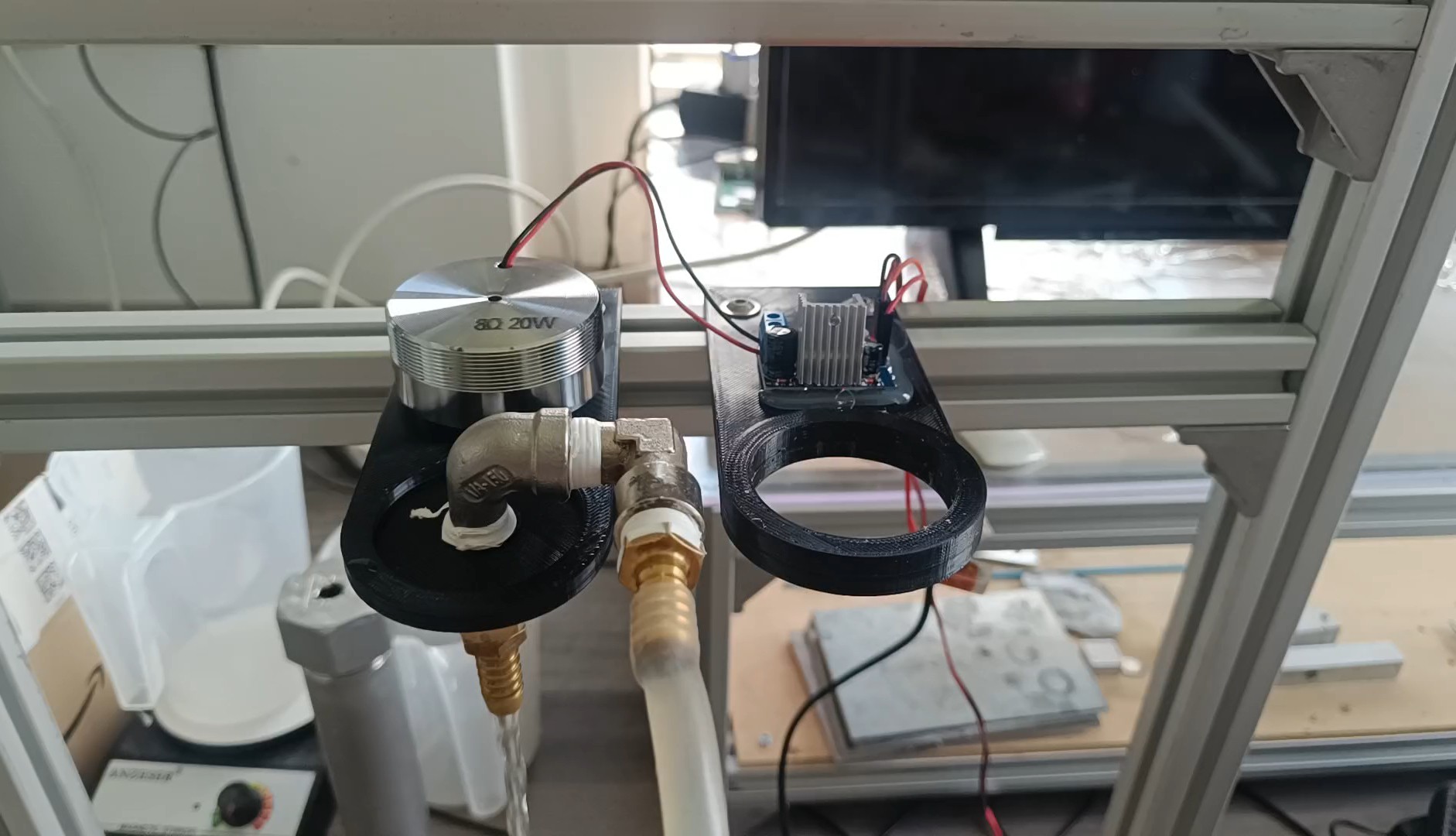
Now, I had two options for recording a slow-motion effect of the drop breakup:
- Using a strobe light matched with the speaker frequency.
- Matching the speaker frequency with the camera's shutter setting.
At first, I tried using the strobe light, so I got a 50W LED mounted on a heat sink and did a quick test run.
Then later, while waiting on the parts for building a strobe circuit, I also tested out using the other method and it worked well enough that I actually never tried using the strobe for recording.
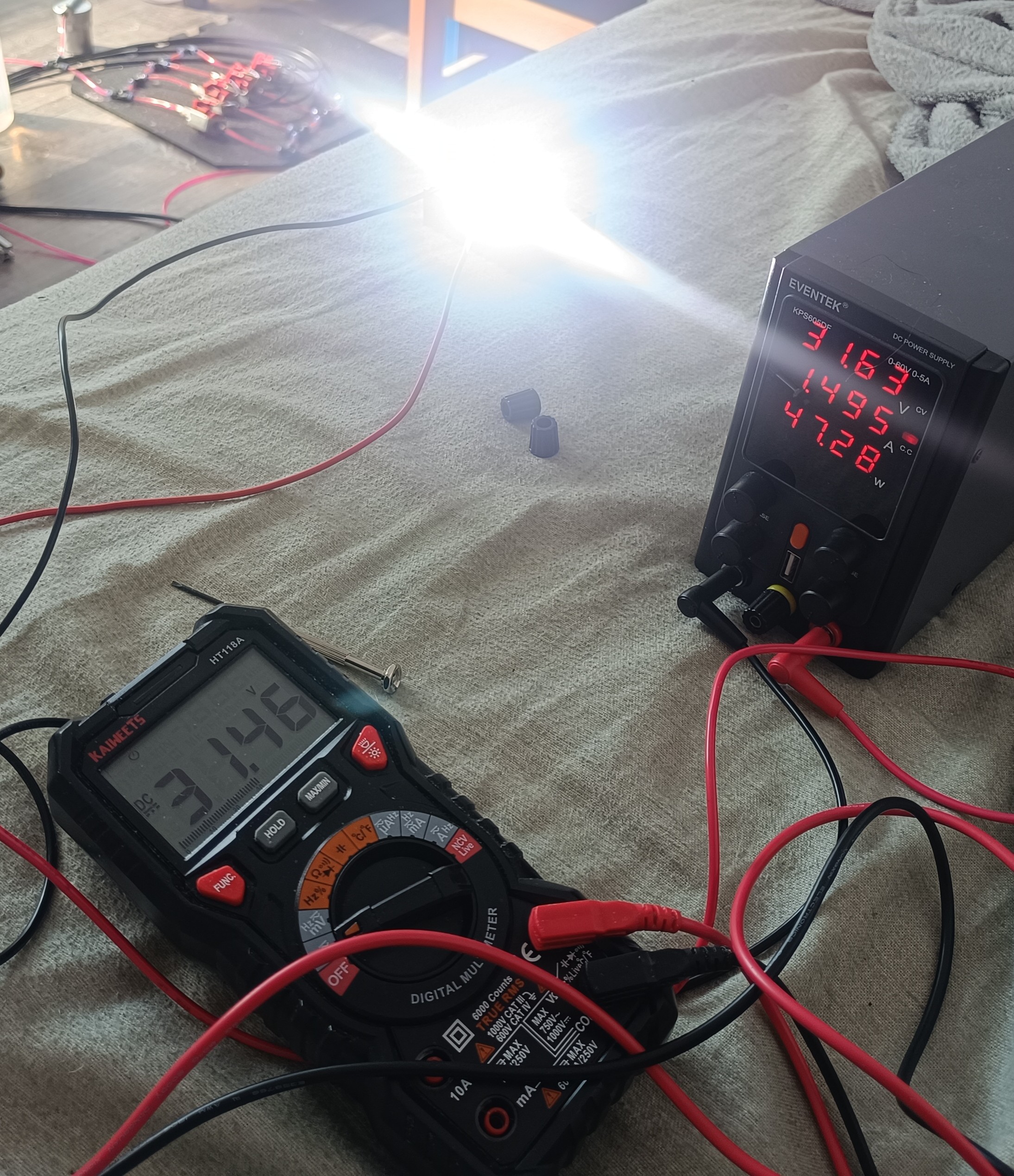
Maybe later, when a higher frequency is used again, the "camera shutter effect" will likely no longer work that well, and so a strobe light will be needed to make the breakup visible.
When I tested it at 50khz last year, I placed the stream in front of a 5mm LED which was also driven at 50khz.
So, it also was a strobe light - but just a small one.
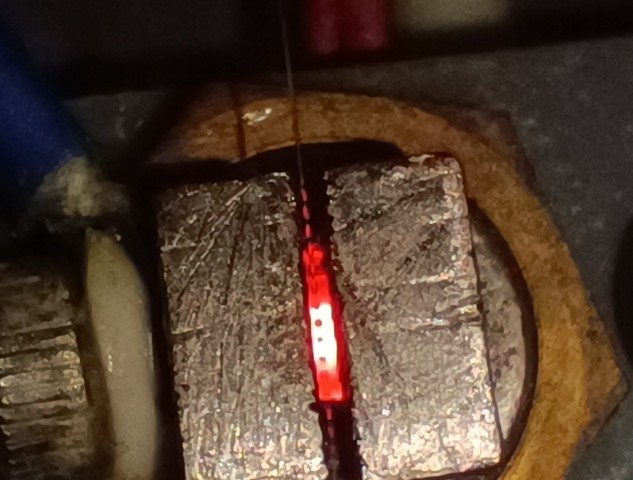
Testing with Water
First, I did a quick test where I set the speaker frequency just below 60Hz and the camera to 60fps, which made it look like the water would flow in reverse. The pipe with the cap in which the stream flows is used to reduce splatter.
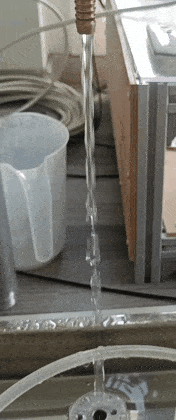
Link to the video:
While there clearly was some effect visible it was not close to what I wanted.
So, I tried using a container with an overflow hole to reduce possible vibration that the pump could transfer to the stream.
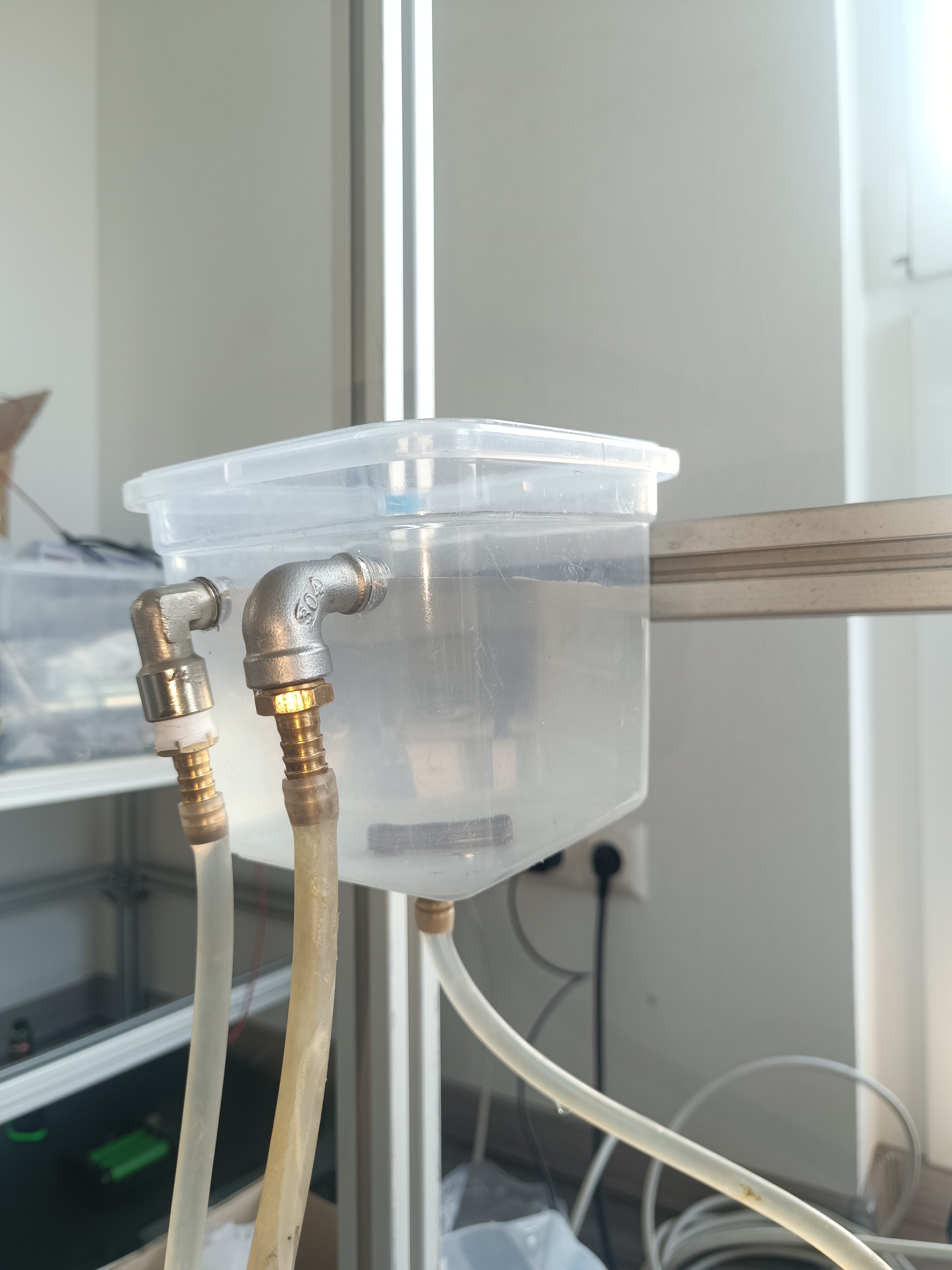
This is how the test stand looked after the change:
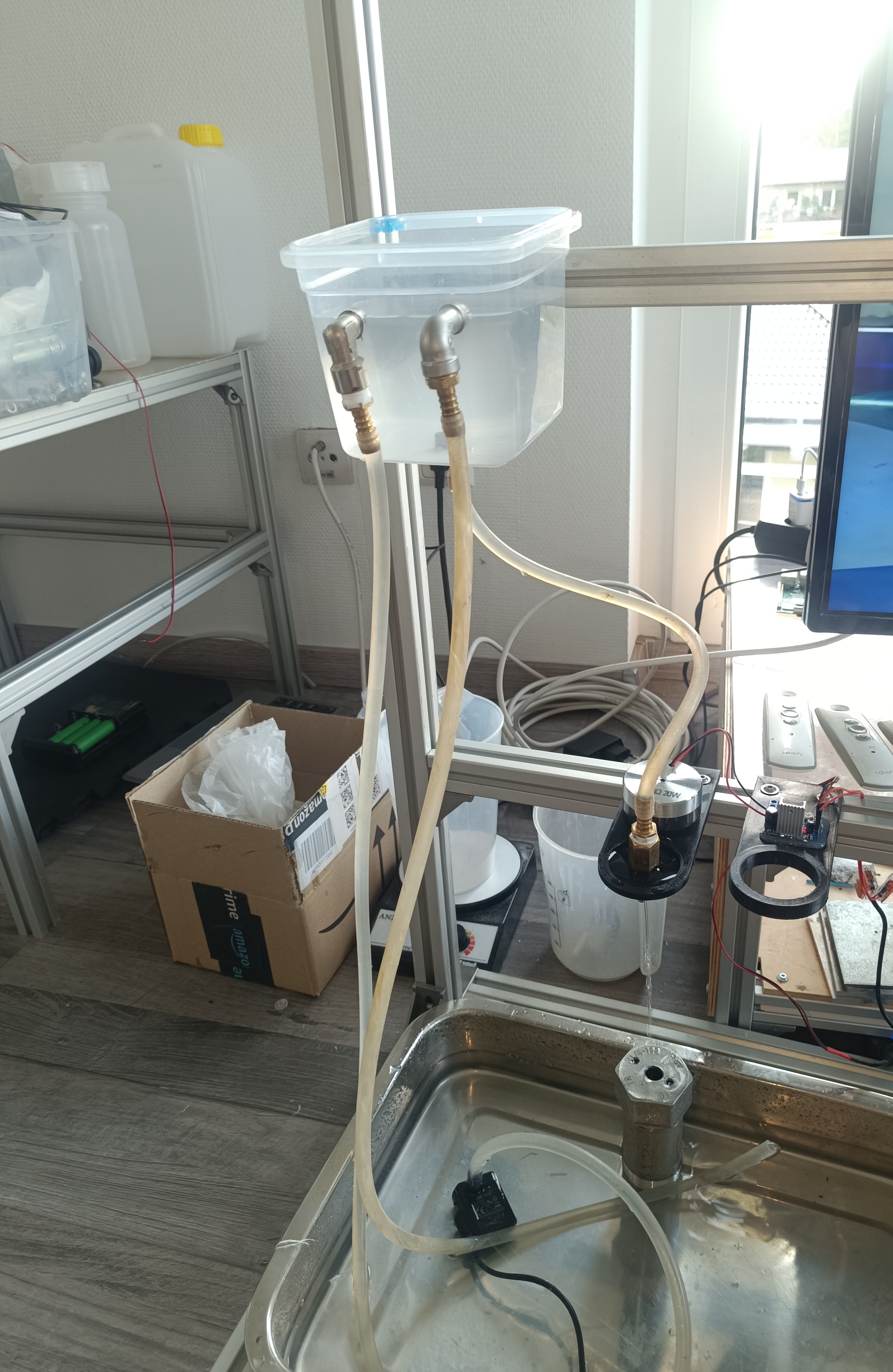
In addition to that, I also tried using a smaller nozzle (4mm OD / 2mm ID tube)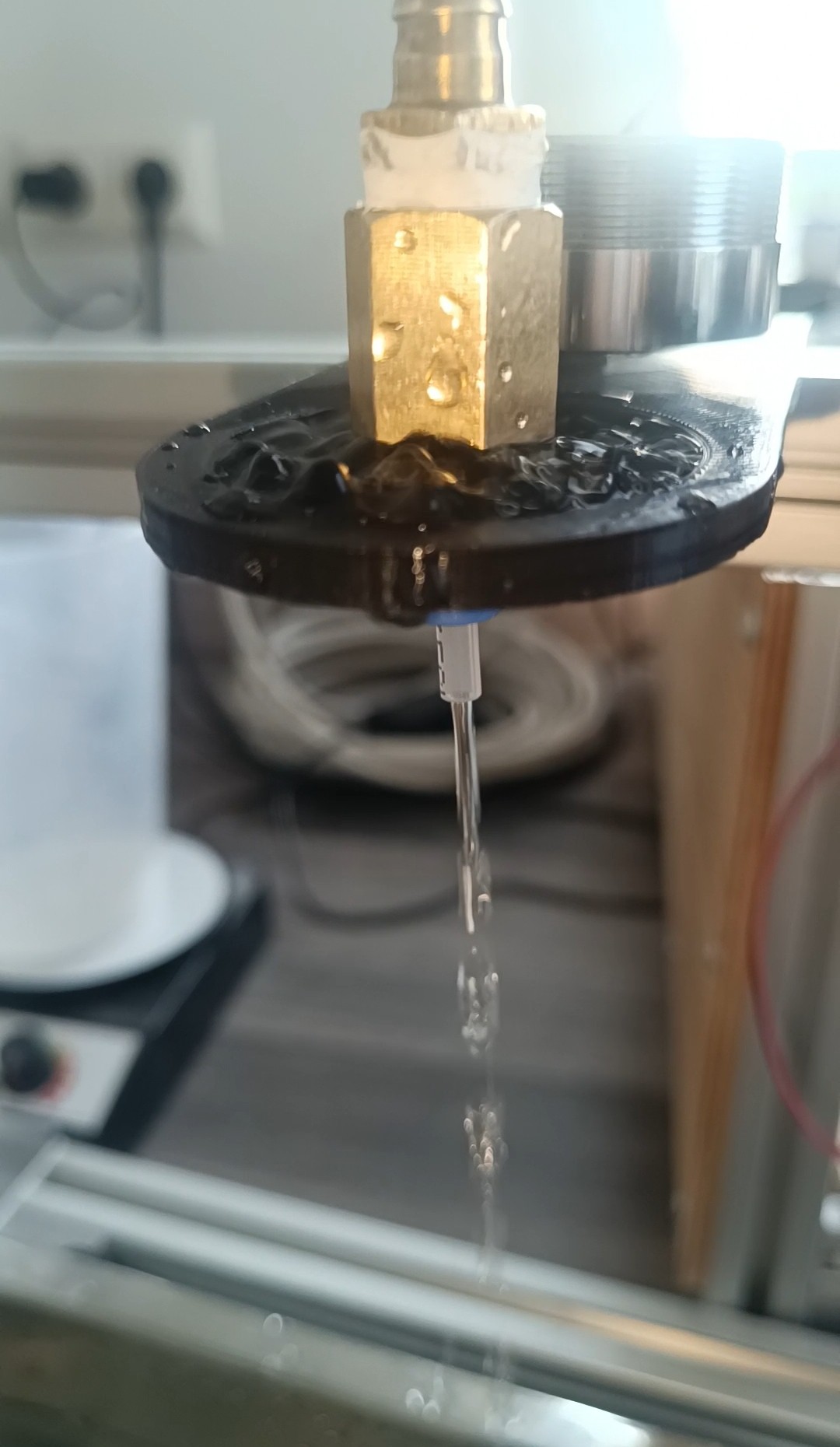
With these changes, it started looking more like individual drops, but there was also a lot of splatter, and it seemed like there was a lot of water breaking out of the stream and falling not straight down.
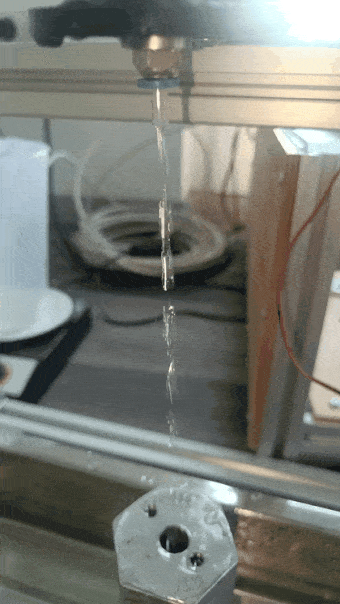
Link to the video:
Testing with Glycerin
To get rid of the splattering, I wanted to try using a fluid with a higher viscosity so I ordered some bottles of glycerin.
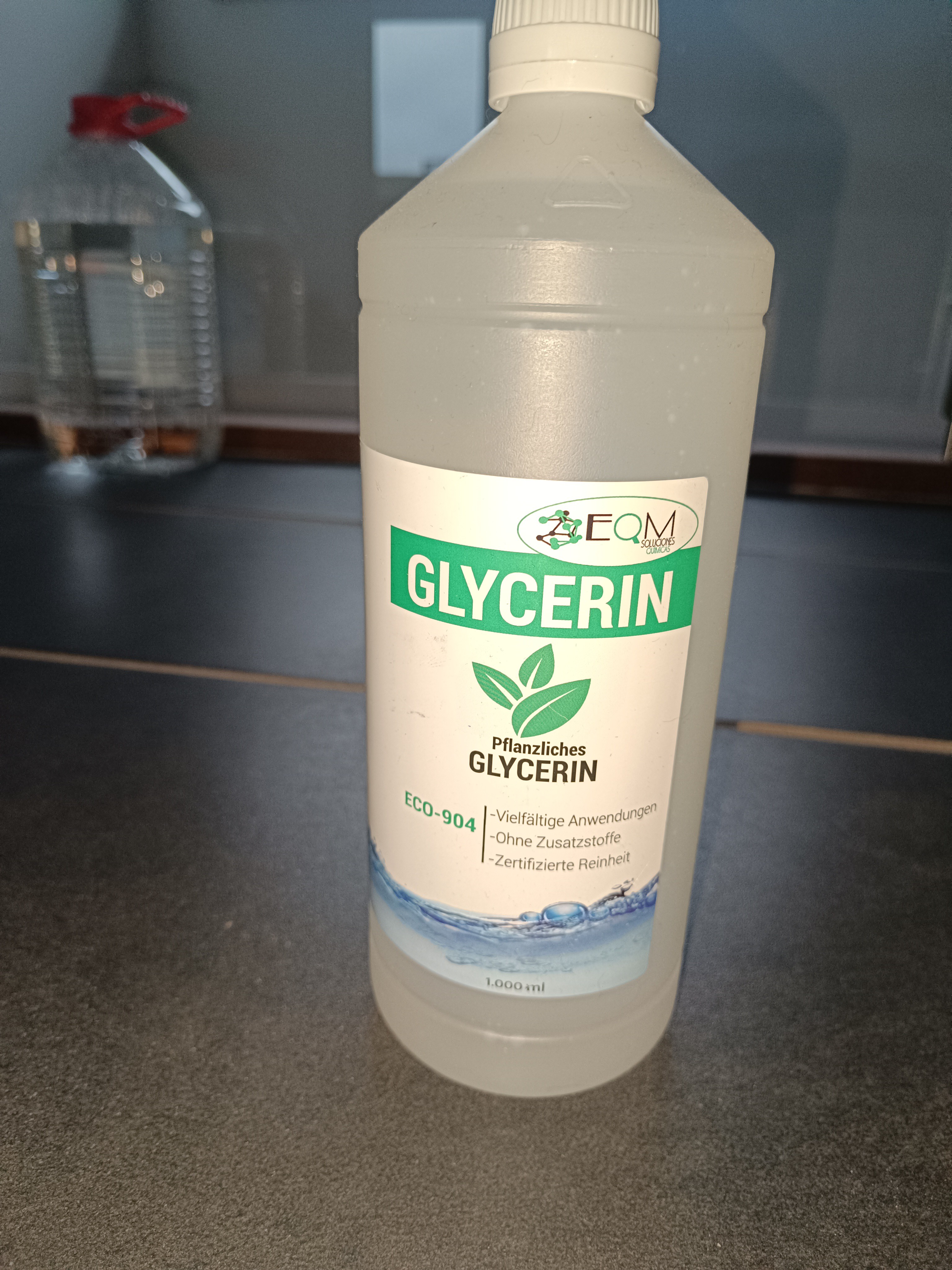
Because of a much higher viscosity than water, the brushless pump was no longer able to pump the fluid up to the overflow box so a gear pump was needed.
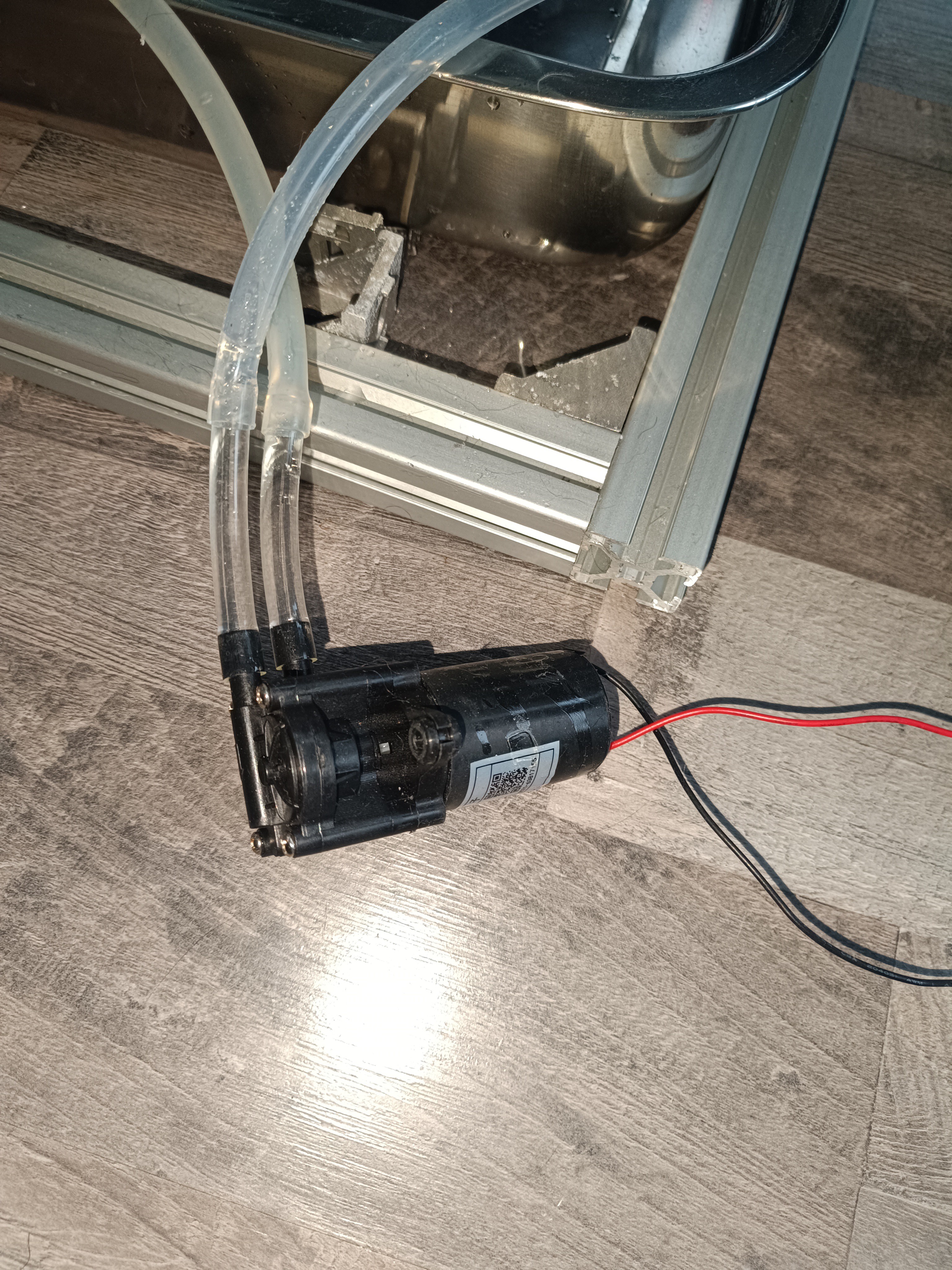
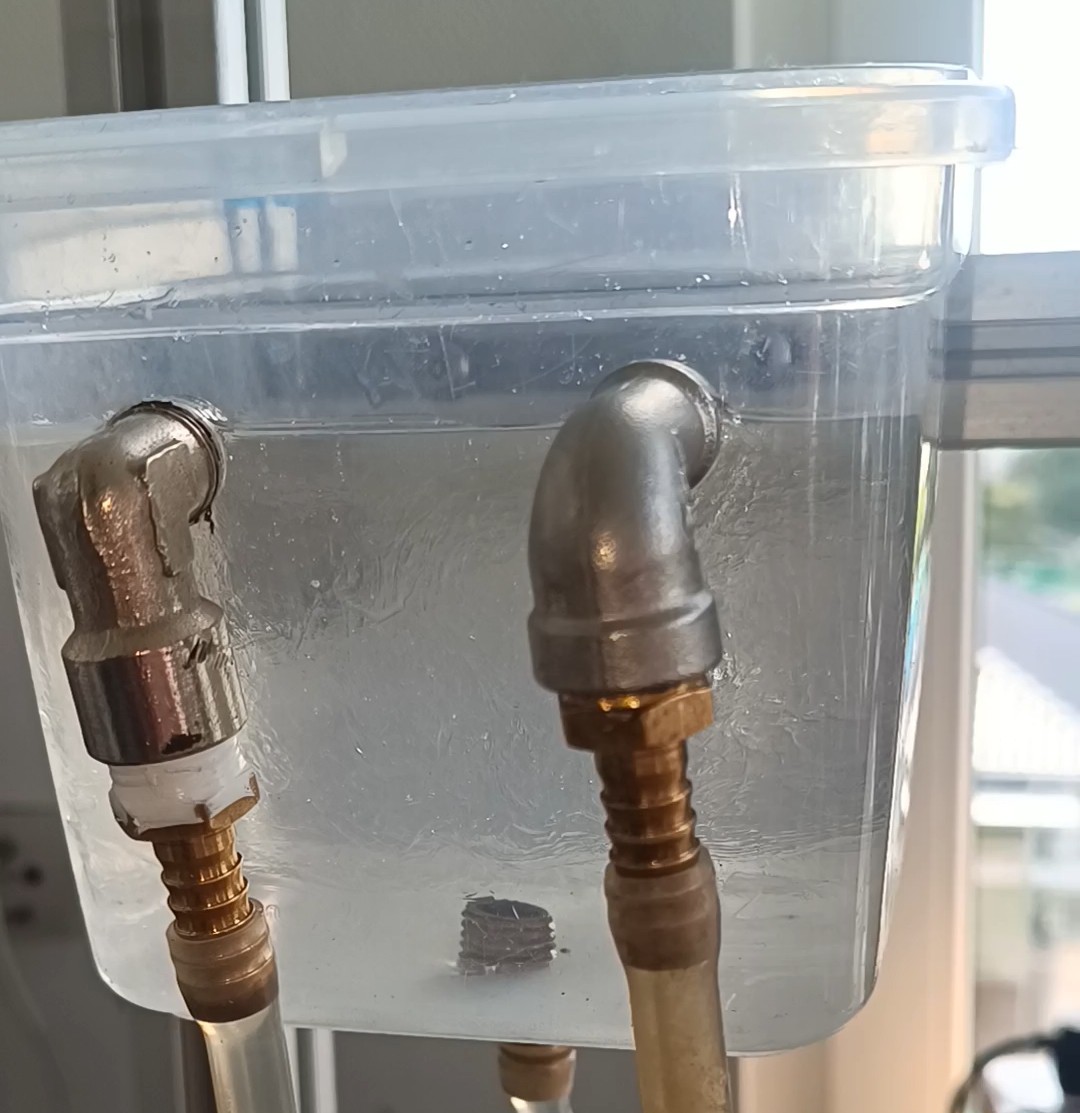
When using pure glycerin, the stream did not even break into droplets when it fell from the same height. l tried using a 5mm nozzle because there was no steady stream, but only drops with the 2mm nozzle.
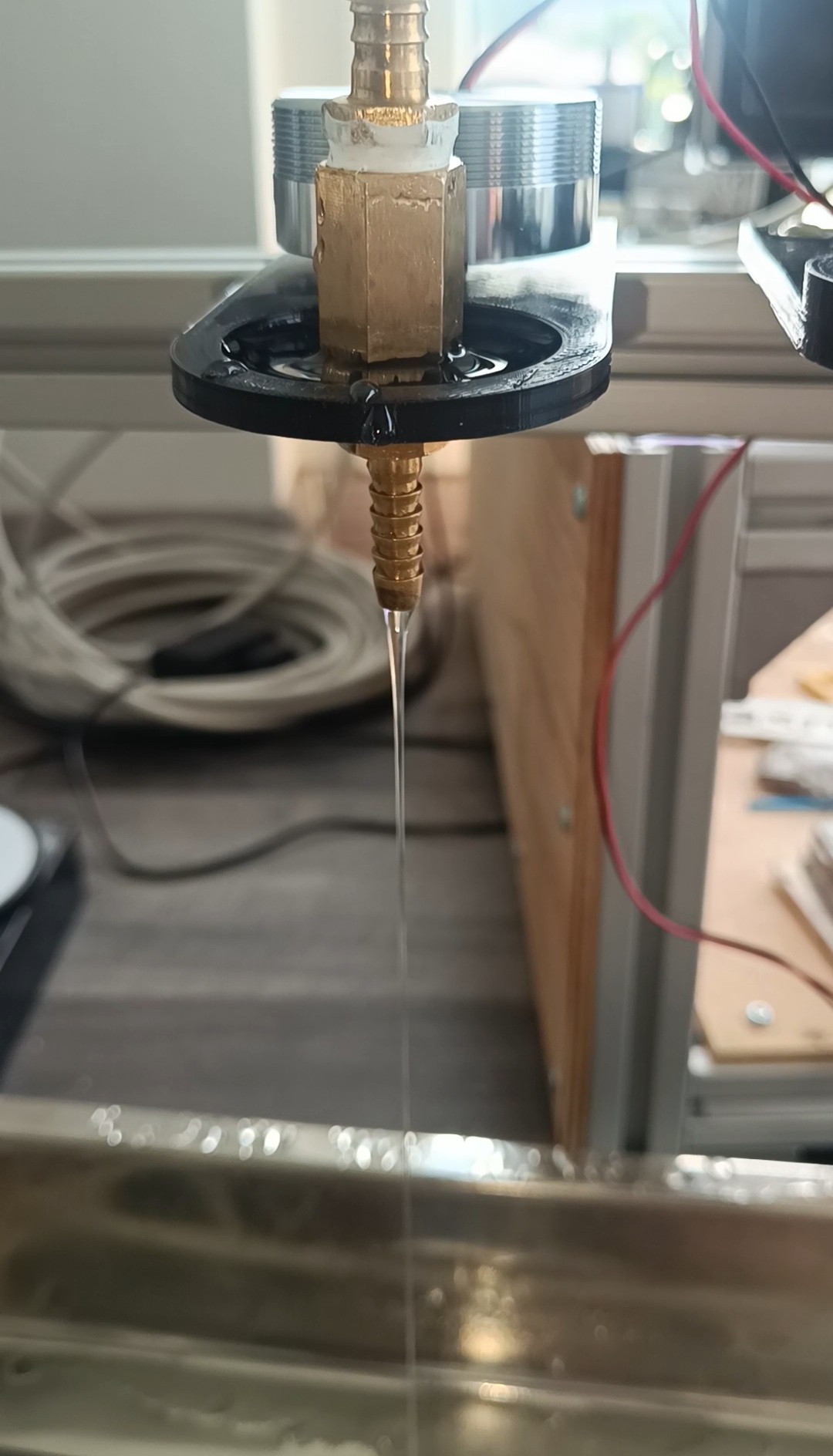
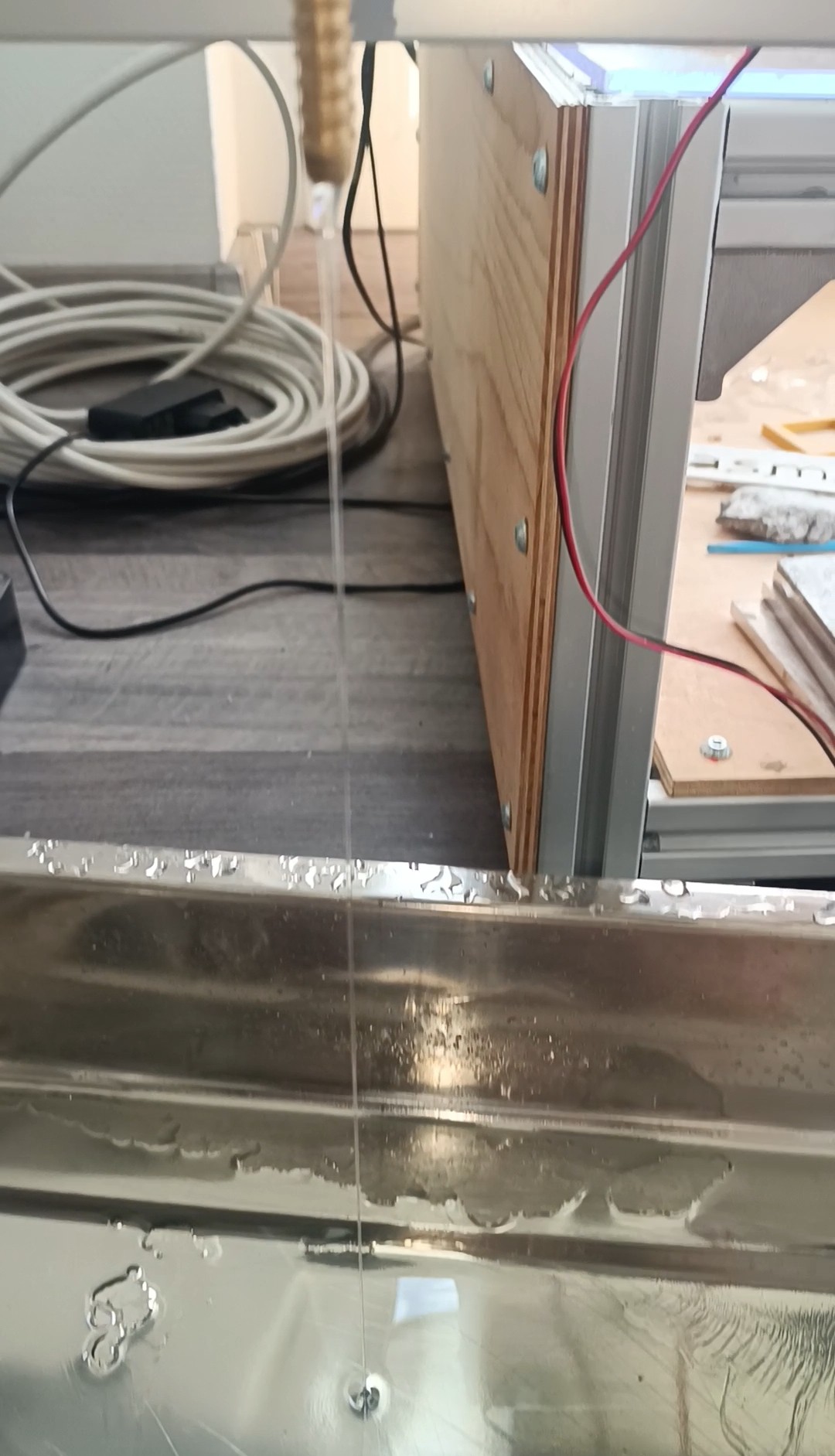
So, I tried adding some water and tried some mixtures. It turned out that the viscosity is better to control when adding water to glycerin instead of adding glycerin to water - the viscosity drops fast when a bit of water is added to glycerin.
By adding just a bit of water it was possible to use the 2mm nozzle again while the stream just started breaking into drops.
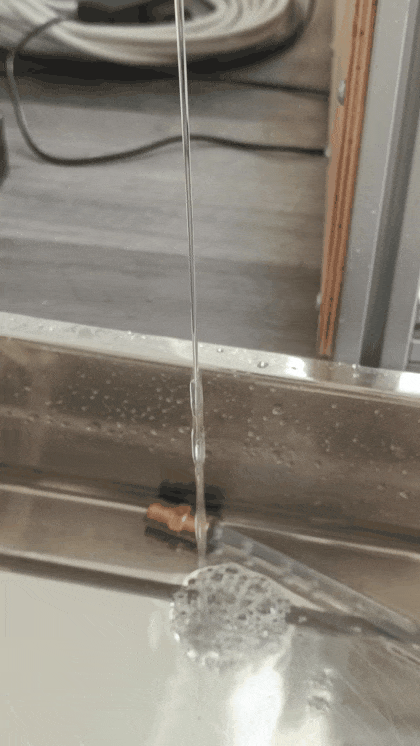
For the next test, I used a mixture ratio of Glycerin Water 2:1 and got a pretty nice result.
There was no more splattering from the stream and the "segments" looked much sharper and steady.
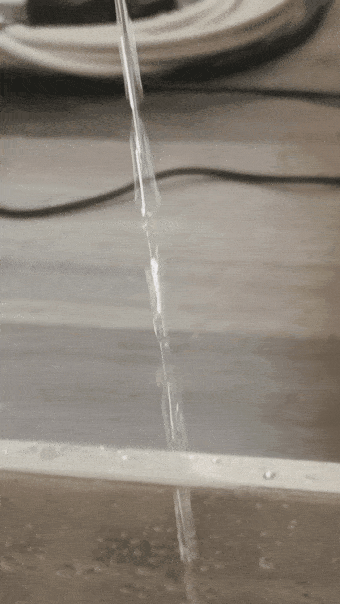
Link to the video:
Placing a lamp next to the stream made the individual segments even more visible.
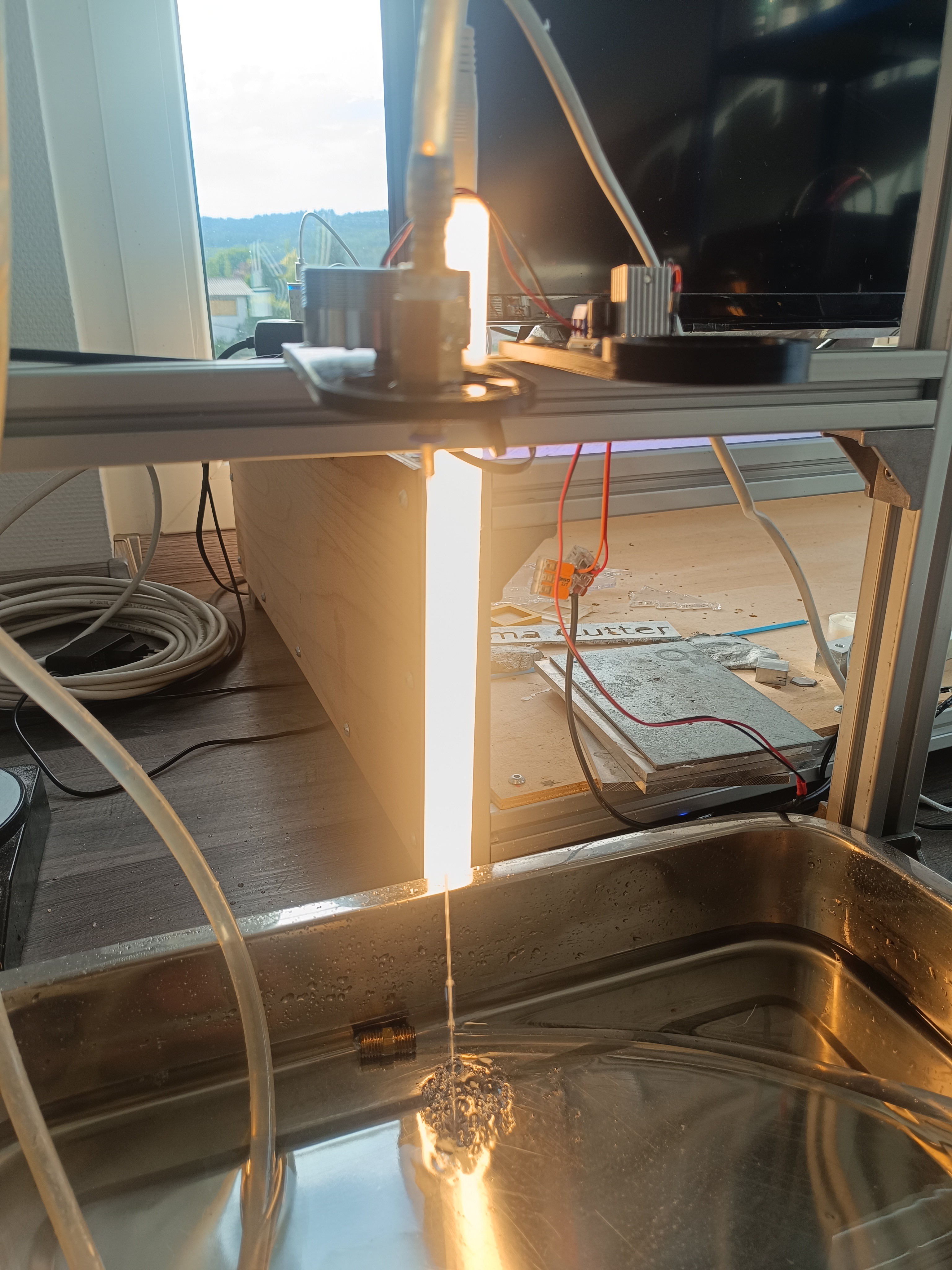

Link to the video:
After that, I tried changing the exposure settings and was finally able to see individual drops falling down.
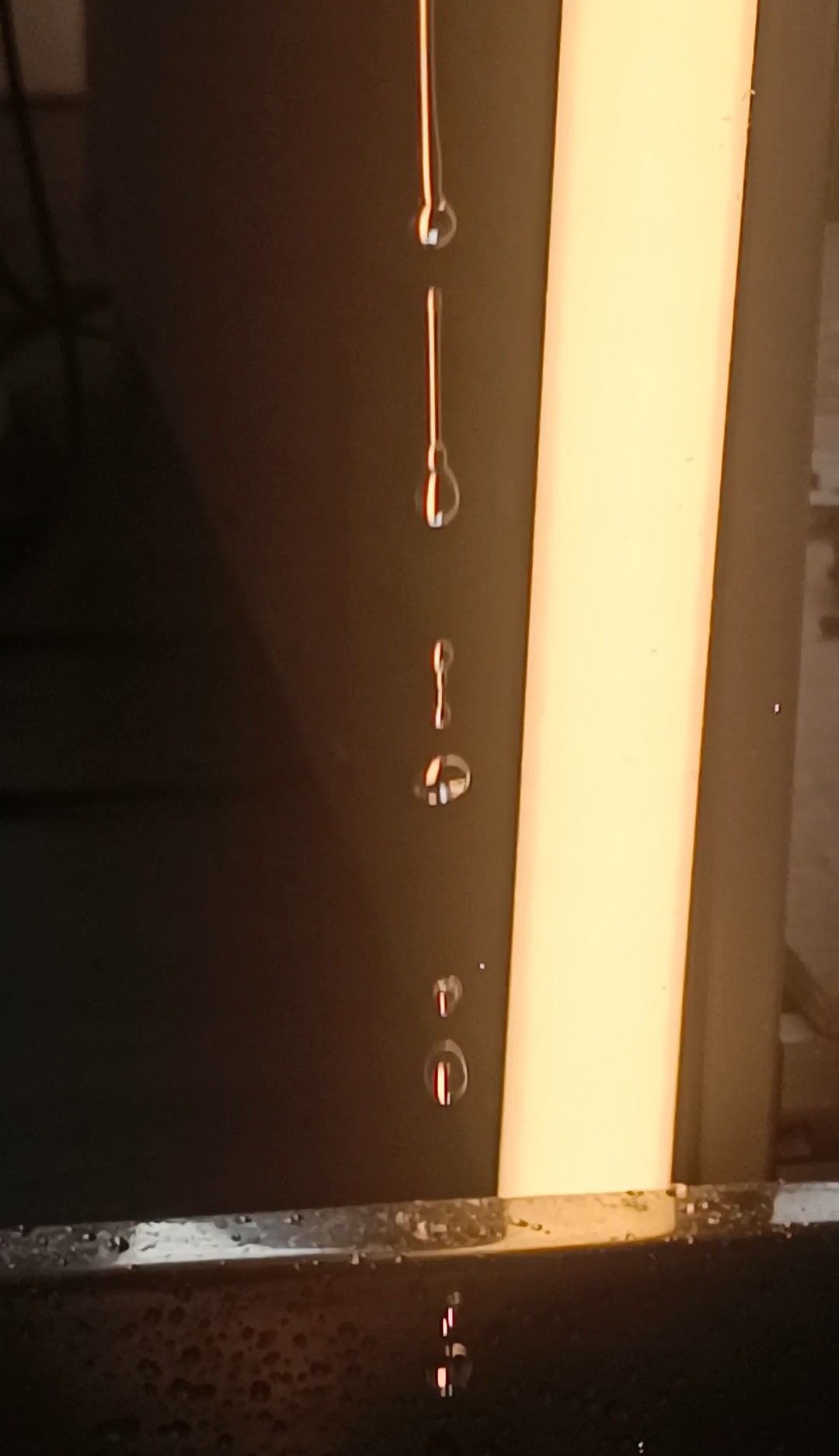
In the recordings, it is visible that the drops not only break up into one single drop but each drop is also followed by a smaller satellite droplet.
I often read that this could be problematic for the charging process, so I want to figure out what is causing it and how to deal with it in the future.
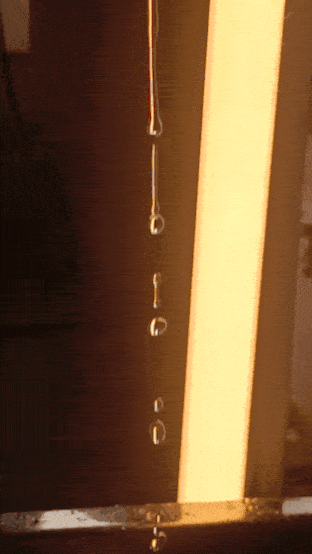
Another recording with smaller satellite droplets:
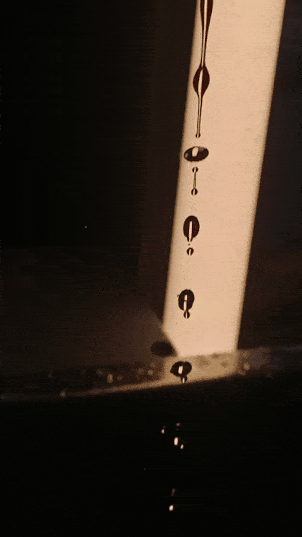
Some more videos:
Conclusion
It's relatively easy to make the drop breakup visible by using just a vibration speaker, amplifier, some backlight, a frequency generator app, and a phone camera set to 60fps in addition to the test stand.
The real challenge would be getting a perfect stable breakup on camera, that has no satellite drops.
I think the viscosity is a major factor here.
When I used pure water, the stream easily broke apart so that parts of the stream got deflected outwards and the separate drops were very wobbly.
When I used pure glycerin, the stream did not even break into drops.
When mixing both the breakup got much better, but not perfect since there were satellite drops visible.
Maybe, since viscosity is a fluid's resistance to flow, a higher viscosity makes it harder for the stream to break up, which prevents the stream from breaking up randomly so that it only breaks up to the vibration of the speaker when present.
The stream still breaks up on its own after some distance, but I think when the speaker's vibration is present, it is the major force that drives the breakup.
The "volume/power setting" of the speaker is also important. When set too low, the stream doesn't break up into drops; when set too high, the breakup starts getting unstable until it disappears. I tried setting the volume to 0 and started increasing it until I got a nice-looking breakup.
From what I have read, the Plateau - Rayleigh Instability is the effect that causes the stream to break up into drops:
https://en.m.wikipedia.org/wiki/Plateau%E2%80%93Rayleigh_instability
While I have read the article about it, I have to admit that I haven't fully understood it yet.
Here is another article which describes the breakup while also mentioning that higher viscosity has a dampening effect on drop breakup:
https://en.m.wikipedia.org/wiki/Fluid_thread_breakup
It also mentions satellite droplets.
So, I'm optimistic that reading more about the topic will help to understand what the key factors of the breakup are for ultimately getting a perfect stream breakup without satellite drops that can be charged and deflected for CIJ printing.
Update:
After reading a bit about the Plateau-Rayleigh Instability, I want to build a setup for measuring the jet velocity, next.
I'm also currently replacing the push in fittings and PU tube with CK fittings and PE tube, because the seals in the fittings get leaky over time and the PU tube seems to get dissolved slowly by the ethanol.
Great thanks to Robert who helps me a lot with this project and thank you for your interest :)
 Dominik Meffert
Dominik Meffert
Discussions
Become a Hackaday.io Member
Create an account to leave a comment. Already have an account? Log In.